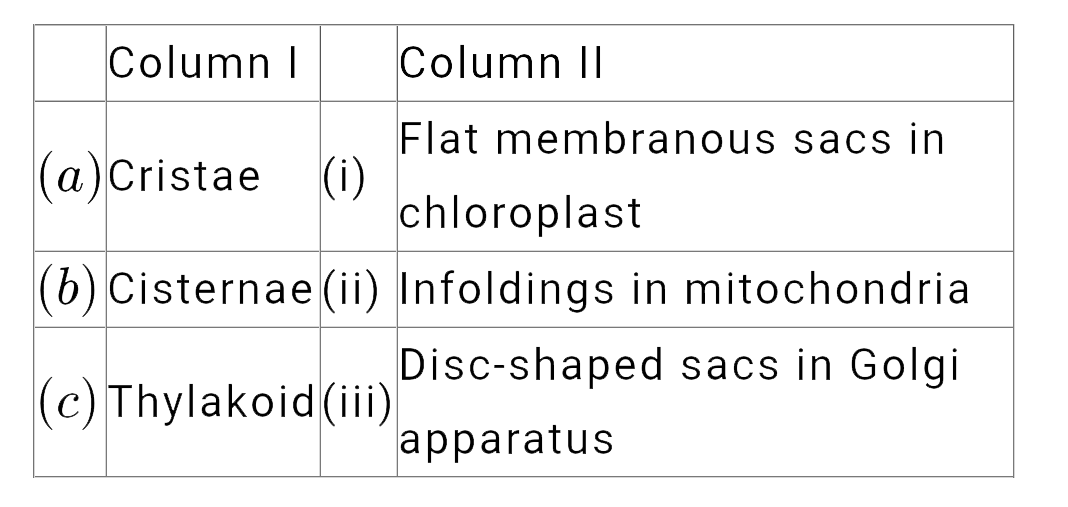The following were the observations made for an infectious agent.
(i) smaller than a virus,
(ii) its nucleic acid had ribose as sugar
(iii) lacks a Protein coat.
Select the disease /s it is most likely to cause.
Potato spindle tuber disease
Potato leaf roll
Potato leaf curl
Both (a) and (b)
The correct Answer is:A
To solve the question regarding the infectious agent with the given observations, we can follow these steps:
1. Identify the Characteristics of the Infectious Agent:
- The agent is smaller than a virus.
- Its nucleic acid contains ribose as sugar.
- It lacks a protein coat.
2. Determine the Type of Infectious Agent:
- Based on the characteristics, we can deduce that the infectious agent is likely a viroid. Viroids are known to be smaller than viruses, consist of RNA (which contains ribose), and do not have a protein coat.
3. Research Diseases Caused by Viroids:
- Viroids are known to cause specific plant diseases. One notable disease caused by viroids is Potato Spindle Tuber Disease. Other diseases associated with viroids include Potato Leaf Roll Disease and Potato Leaf Curl Disease.
4. Select the Most Likely Disease:
- Given the observations and the identification of the infectious agent as a viroid, the disease it is most likely to cause is Potato Spindle Tuber Disease.
5. Final Answer:
- The infectious agent described is most likely to cause Potato Spindle Tuber Disease.
- The agent is smaller than a virus.
- Its nucleic acid contains ribose as sugar.
- It lacks a protein coat.
- Based on the characteristics, we can deduce that the infectious agent is likely a viroid. Viroids are known to be smaller than viruses, consist of RNA (which contains ribose), and do not have a protein coat.
- Viroids are known to cause specific plant diseases. One notable disease caused by viroids is Potato Spindle Tuber Disease. Other diseases associated with viroids include Potato Leaf Roll Disease and Potato Leaf Curl Disease.
- Given the observations and the identification of the infectious agent as a viroid, the disease it is most likely to cause is Potato Spindle Tuber Disease.
- The infectious agent described is most likely to cause Potato Spindle Tuber Disease.
Topper's Solved these Questions
Similar Questions
Match the column.

View SolutionRed tide is caused by an organism which closely by a organism which structures ?
View SolutionAssertion : Nucleic acid complexes alone cannot cause diseases.
Reason : Only nucleoproteins can function as infectious agents.
View Solution$ Proteins, polysaccharides and nucleic acid are the macromolecules of a cell.
! DNA contains Ribose Sugar.
View Solutionराइबोस शर्करा युक्त नाभिकीय अम्ल का नाम लिखिए।
View SolutionThe infectious agent that is smaller to viruses and caused potato spindle tuber disease is
View SolutionAfter extracting an organism, the scientist listed out the below features about it: (i) smaller than a virus, (ii) its nucleic acid had ribose as sugar , and (iii) lacks a protein coat . Which of the following diseases is likely to be produced by it?
View SolutionName the Protein coat which surrounds the viral nucleic acid, core of virus.
View SolutionInfectious agent which is smaller than virus and having no protein coat is
View SolutionAssertion : Nucleic acid complexes alone cannot cause diseases.
Reason : Only nucleoproteins can function as infectious agents.
View SolutionName the protein coat which surrounds the nucleic acid core of a virus.
View Solutionसंक्रामक कारक जो विषाणु से छोटा होता है और पोटेटो स्पिंडल ट्यूबर रोग का कारण बनता है, उसे क्या कहते हैं?
View SolutionThe infectious agent that is smaller to viruses and caused potato spindle tuber disease is
View SolutionThe smallest disease - causing agent is .... and it is made up of ………. (a) (i) mycoplasma (ii) proteins and nucleic acids (b) (i) prions, (ii) Proteins only (c) (i) viroids, (ii) nucleic acids only (d) (i) viroids, (ii) proteins only
View SolutionThe following were the observations made for an infectious agent.
(i) smaller than a virus,
(ii) its nucleic acid had ribose as sugar
(iii) lacks a Protein coat.
Select the disease /s it is most likely to cause.
View Solution
